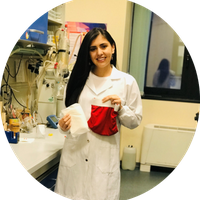Biotechnology & medicine
Chong Liu
Using solar energy to synthesize bio-organic fertilizers

MENA
Aya Elghajiji
Using large area electrodes to study the behavior of human cancer cells.

Latin America
Carolina Serrano
Her reusable, biodegradable, and low-cost diapers meet eight of the 17 Sustainable Development Goals.

China
Cheryl Cui
Building a "new infrastructure" for synthetic biology

China
Yue Shao
Pioneered development of embryo-free human embryology
